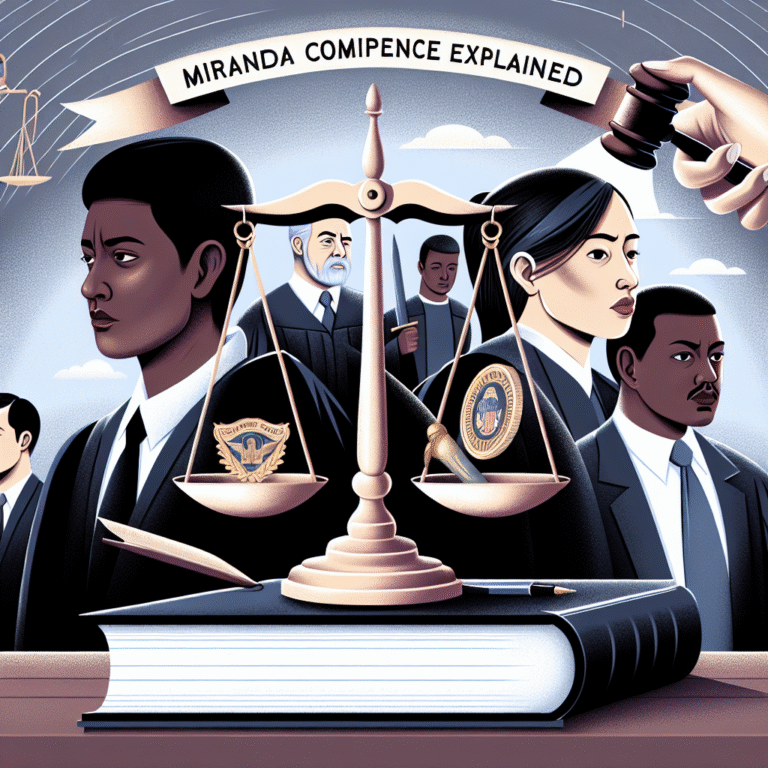
Introduction
Imagine a scenario where a detective is piecing together a complex puzzle—a missing person’s case that has the potential to turn deadly. With each clue, the stakes rise. Investigative professionals find themselves at a pivotal crossroads: how can they enhance their effectiveness and accuracy in solving such critical cases? This is where Enhancing Investigative Effectiveness: A Deep Dive into Behavioral Evidence Analysis comes into play.
Behavioral Evidence Analysis (BEA) represents a revolutionary approach to crime investigation that delves deep into the psychology of both victims and perpetrators. By understanding the behaviors, motivations, and interactions at play, investigators can significantly improve their effectiveness in gathering evidence, drawing connections, and ultimately solving cases.
In this article, we will unpack the multifaceted layers of BEA and explore how it can refine investigative effectiveness. Through case studies, practical applications, and actionable insights, we’ll guide you through the transformative potential of behavioral analysis in criminal investigations.
Understanding Behavioral Evidence Analysis (BEA)
What is Behavioral Evidence Analysis?
Behavioral Evidence Analysis is a systematic method for understanding human behavior in the context of crime. It emphasizes the psychological motivations of individuals involved—victims, witnesses, and suspects alike. By examining behavior patterns and contextual elements, investigators can draw critical conclusions that conventional methods might overlook.
Key components of BEA include:
- Victimology: Understanding the victim’s life, personality, and likely interactions prior to the crime.
- Offender Profiling: Identifying potential characteristics and motivations of the perpetrator.
- Crime Scene Analysis: Interpreting the scene to derive behavioral insights.
Core Principles of BEA
To efficiently employ BEA, one must grasp its foundational principles:
- Behavior is Predictable: Human actions often follow understood patterns. Investigators can predict future behaviors by studying past actions.
- Context Matters: The environment and specific circumstances surrounding a crime inform behavioral motives.
- Multi-disciplinary Approach: BEA pulls from psychology, criminology, and sociology, making it a well-rounded technique for in-depth analysis.
Enhancing Investigative Effectiveness through Case Studies
Case Study 1: The Harvard Murder Case
Background: In 2005, the murder of a Harvard student shocked the academic community. Initial investigations went cold due to a lack of leads.
BEA Application: Investigators employed BEA by delving into the victim’s life. They conducted a thorough victimology assessment to understand the social circles, relationships, and conflicts the student had. This analysis revealed a pattern of strained relationships with a particular individual, leading to renewed inquiries.
Outcome: The new focus on behavior and interpersonal relationships helped expose a critical witness, ultimately leading to the arrest and conviction of the perpetrator.
Relevance: This case illustrates how focusing on why a victim interacted with specific people can clarify motive and lead to breakthrough information.
Case Study 2: The Oak Ridge Arson Incident
Background: In 2010, a series of arson attacks devastated a small town in Oak Ridge. Traditional investigative methods were ineffective, as no witnesses stepped forward.
BEA Application: Investigators analyzed past behaviors in the community, focusing on significant events leading to the arson—such as economic downturns and local personalities who exhibited suspicious behaviors.
Outcome: By identifying several potential suspects through behavioral patterns, investigators were able to solve the case and recover the property.
Relevance: This case demonstrates how behavioral analysis can uncover underlying societal issues contributing to criminal actions, thereby enhancing the overall effectiveness of investigations.
Framework for Implementing BEA in Investigations
Step 1: Training Investigators
For Enhancing Investigative Effectiveness: A Deep Dive into Behavioral Evidence Analysis to be effective, it’s critical that law enforcement undergoes training programs that emphasize the principles of behavioral analysis. Workshops, seminars, and practical exercises can cultivate a deeper understanding of the human psyche.
Step 2: Integrating Technology
Modern technology can significantly bolster BEA efforts. Tools such as data analysis software, geo-profiling, and behavioral mapping can provide investigators an edge in recognizing trends and drawing connections.
| Technology Utility | Description | Benefits |
|---|---|---|
| Data Analysis Software | Processes large data sets for patterns and trends | Highlights connections between suspects |
| Geo-Profiling | Analyzes spatial and geographic data | Identifies hotspots of criminal activity |
| Behavioral Mapping | Visual representation of behaviors over time | Simplifies complex relationships and patterns |
Step 3: Collaborative Approach
BEA thrives on the collaborative efforts of various professionals, including psychologists, social workers, and criminal analysts. Such partnerships can provide a holistic view of cases and uncover layers often missed in isolated investigations.
Actionable Techniques for Investigators
Tip 1: Conduct Thorough and Ongoing Victimology Studies
Making victimology a continuous process can yield invaluable insights. Investigators should stay open to new data throughout the investigation.
Tip 2: Focus on Behavioral Indicators
Look for subtle indicators—changes in behavior, social withdrawal, or hostility in relationships. These indicators can reveal motives or underlying tensions that warrant investigation.
Tip 3: Use Interviews as a Behavioral Analysis Tool
When interviewing suspects or witnesses, ask open-ended questions to gauge responses. Behavioral responses can offer insights into truthfulness.
Tip 4: Leverage Community Input
Community engagement plays a pivotal role. Establishing a dialogue can help gather valuable information that behavioral analysis might miss.
Tip 5: Continuously Evaluate and Adapt
The criminal landscape evolves. Continual training and adaptation of BEA techniques will ensure investigators remain effective and informed.
FAQs: Addressing Common Concerns
1. What role does psychology play in BEA?
Psychology is at the heart of BEA. Understanding the nuances of human behavior allows investigators to interpret motivations behind actions, leading to informed conclusions.
2. How can BEA be integrated into existing investigative frameworks?
BEA can be layered onto existing frameworks by implementing training for investigators, employing new technologies, and fostering collaborative environments within law enforcement.
3. Are there specific types of cases where BEA is more effective?
Yes, cases involving interpersonal relationships, such as domestic violence or missing persons, can greatly benefit from BEA, as understanding relational dynamics is crucial.
4. How can technology enhance BEA processes?
Technology can process large volumes of data to identify trends, visualize behaviors, and simulate scenarios that aid investigators in critical decision-making.
5. What outcomes can expecting from BEA implementation?
Investigators using BEA can look forward to improved investigative outcomes, including a higher solve rate, more targeted inquiries, and, ultimately, increased community safety.
Conclusion
Enhancing Investigative Effectiveness: A Deep Dive into Behavioral Evidence Analysis is not merely a niche topic; it is a transformative approach vital for modern investigative practices. By understanding the behavioral aspects of crime and leveraging these insights, law enforcement can enhance their effectiveness dramatically.
From comprehensive victimology studies to the integration of advanced technology and impactful community engagement, investigators have a wealth of resources at their disposal. The case studies we’ve explored provide testament to the power of BEA in solving complex cases and underscore its significant role in ensuring justice.
As you step into the field of investigation—whether as a seasoned professional or an eager newcomer—remember the importance of the human mind in crime-solving. By prioritizing understanding behavior, you can define a path toward achieving investigative excellence. The journey toward enhancing investigative effectiveness begins with a deeper dive into the intricate world of Behavioral Evidence Analysis. Embrace it, and the results will speak for themselves.

















